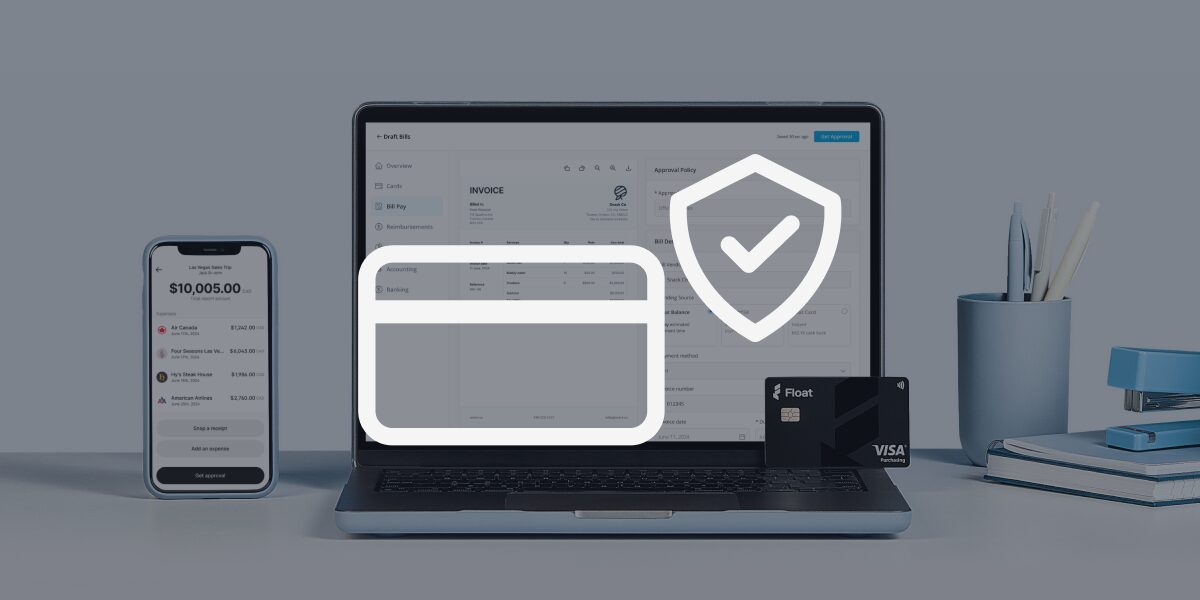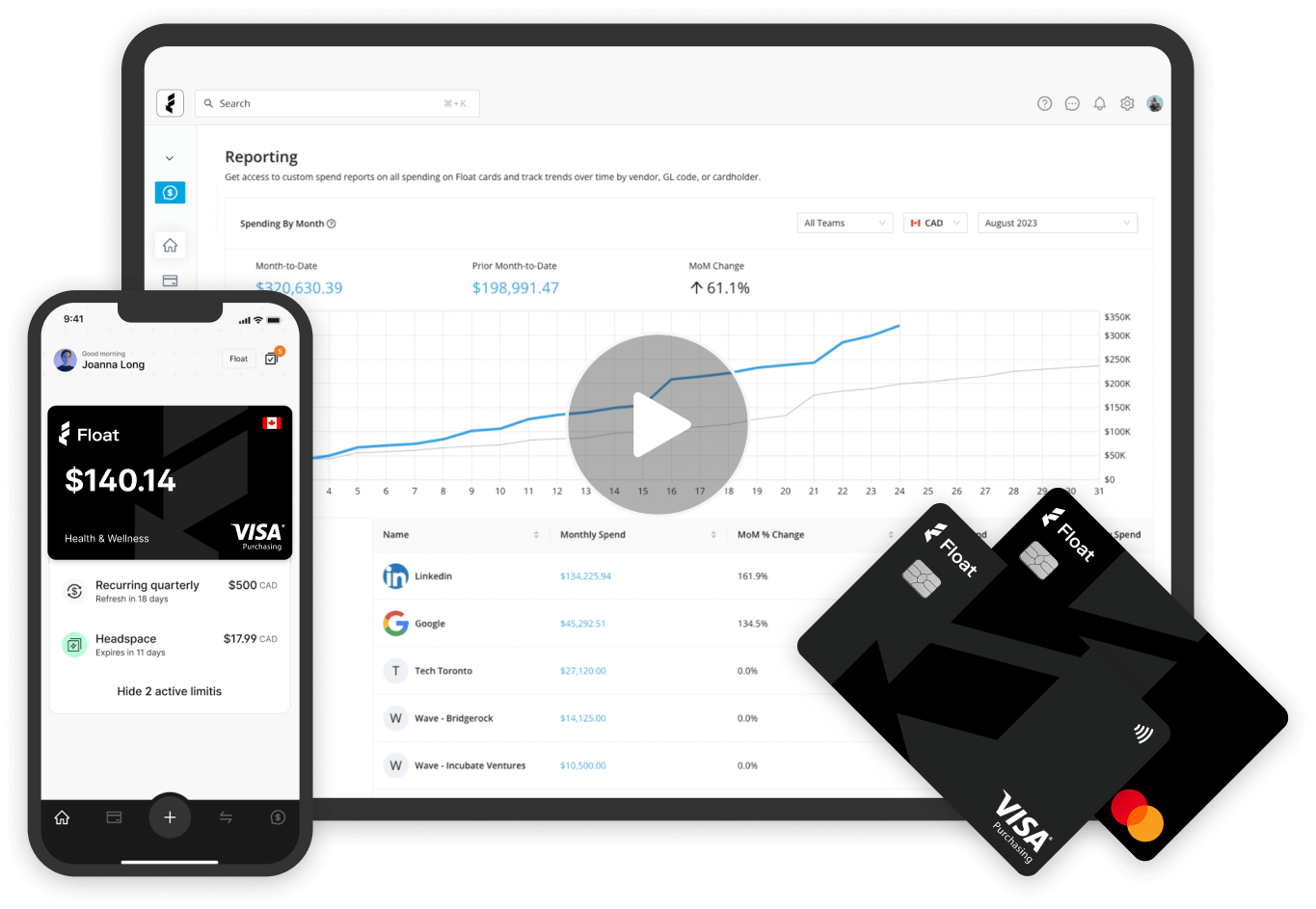Expense Management
How Do You Handle Employee Reimbursements Efficiently?
Learn how to simplify employee reimbursements with efficient, scalable strategies for small businesses and growing finance teams.
December 5, 2025

Employee reimbursements may not be the flashiest part of running a business, but they are pretty telling. When handled well, they reinforce trust, improve financial visibility, and keep operations humming. When handled poorly, expect confusion, wasted time, delayed payments, and frustrated employees.
Whether you’re running a lean startup or managing a finance team in a larger business, your approach to reimbursements sets the tone for how your company values time, clarity and accountability.
And compliance around employee reimbursements isn’t just about keeping your books in order—employer responsibilities for timely reimbursements are covered under Canada’s Labour Code.
We spoke with Mandeep Saini, Co-Founder and Head of Finance Services at BrightIron, a fractional finance, HR, and go-to-market services provider for Canadian startups and scale-ups and Float customer, to get his take on where businesses go wrong and how they can fix it.
Efficient employee reimbursement strategies for small businesses
Small teams move fast. They’re often short on headcount and time, and processes like employee reimbursements tend to happen on the fly. That ad hoc approach might work at first, but it doesn’t last.
“Manual processes are fine, but they don’t scale—and then they break quickly,” says Mandeep.
Here are Mandeep’s top tips for small business owners who want to avoid the clutter, chaos and confusion that often come with employee expense reimbursements.
1. Create a simple employee reimbursement policy
Even if your team is only five people strong, put together a one-pager that outlines what can be reimbursed, when to get pre-approval and how to submit expenses. Without it, expectations can vary wildly. One employee might think lunch with a client means a $100 sushi bill, while another sticks to a sandwich. Clear policies prevent those awkward “is this reimbursable?” moments and create consistency across the board.
2. Automate, don’t email
Reimbursements via email might seem efficient, but they’re a black hole in reality. Once someone hits ‘send’ on their employee reimbursement form and backup docs, the process becomes opaque. Employees are left wondering when (or if) they’ll be reimbursed—and whoever’s managing reimbursements ends up fielding status update requests. Modern expense tools streamline the entire process, from receipt capture to approval and payment.
3. Make it easy for employees
Missing or incomplete receipts can create headaches during reconciliation and tax time. But most small businesses don’t have the bandwidth to chase them down. A simple fix? Make it easy for employees to upload expenses in real time through a software platform or integrated tool rather than waiting to email or submit physical receipts.
4. Make it mobile-friendly
Reducing obstacles for expense submission is half the battle. Choose a tool that lets employees snap and upload photos of receipts from their phones. It simplifies compliance and ensures that you capture the right data for accurate reporting. Itemized receipts and tax information can go a long way toward keeping you compliant.
5. Don’t DIY forever
Founders often try to save money by handling reimbursements themselves. But time spent approving expenses or chasing receipts could be better invested in growing the business. Even if you’re not ready to hire in-house finance support, outsourcing or automation can buy back critical hours.
Efficient strategies for medium or larger businesses (with in-house finance teams)
As companies grow, so do the complexities of their spending. With more employees and a wider range of expenses, the risks of non-compliance, delays and inconsistencies multiply fast.
“The biggest concern at scale is efficiency and transparency,” says Mandeep. “Employees need to know what’s allowed, what’s not and where things stand at any point in the process.”
And finance teams need the same. Here’s how Mandeep suggests you keep employee expense reimbursements running smoothly as your organization scales—without losing control (or sanity).
1. Use robust systems that help enforce your policies
Larger organizations need software that can handle more complex rules. Whether limiting spend by role, enforcing preferred vendors or flagging claims outside your employee reimbursement policy, modern platforms can keep you compliant without slowing down the process.
2. Set approvals before the spend happens
It’s too late to flag issues after the fact. A pre-approval process helps set expectations and avoid awkward back-and-forth exchanges that create anxiety on both sides. With upfront guardrails in place, employees can confidently make purchases they know will be reimbursed.
3. Increase transparency
No one likes submitting an expense report and hearing crickets for weeks. A good expense management system provides real-time tracking so employees can see when something is pending, approved or paid. That visibility also helps managers spot bottlenecks or delays in the process before they escalate.
Make expense management even easier
Streamline your business spending with automation tools built right into Float.
4. Align finance with employee experience
Delays in reimbursement can erode employee trust—especially for team members who may not have the financial flexibility to front business costs. A consistent, predictable system supports both employee satisfaction and operational integrity.
5. Match tools to team structure
Choose solutions that integrate seamlessly with your existing workflows and approval processes. If your finance team is juggling multiple tools, consolidating can reduce friction and improve accuracy. The right platform should feel like it’s working for your team, not the other way around.
Reimbursements vs corporate cards: Cost and efficiency analysis
Even with the best policies and tools, reimbursements still create friction. They’re reactive by nature: employees spend first, then finance teams scramble to reconcile later.
Beyond the workflow challenges, reimbursements are also extremely costly. According to the Global Business Travel Association, processing a single properly submitted expense report costs companies an average of $58. Even if your team processes just one report per business day, that’s more than $14,000 per year in administrative overhead.
And that’s before you factor in errors—because mistakes are almost guaranteed. According to the same report, 19% of expense reports contain errors, each requiring about 18 minutes to correct and costing an additional $52. That brings the cost of an error-ridden report to $110. Across a year of business days, those errors alone add roughly $5,500 more.
In total, even a low-volume reimbursement process can cost a business nearly $20,000 annually—much of it tied up in manual corrections, wasted time, and preventable inefficiencies.
What a waste.
Corporate cards flip that equation on its head by enabling approved spending upfront and capturing every transaction in real time.
Here’s how the two approaches compare:
| Factor | Traditional reimbursements | Corporate cards (like Float) |
| Speed | Payments processed days or weeks after submission | Instant payment at the point of purchase |
| Employee experience | Employees cover costs out of pocket and wait for reimbursement, causing frustration and concern | Employees never have to front business expenses |
| Administrative time | Manual data entry, receipt chasing and approval bottlenecks | Automated tracking and built-in approval workflows |
| Cost to process | Higher due to manual oversight and multiple touchpoints | Lower thanks to automation and reduced errors |
| Visibility and control | Limited insight until after expense reports are filed | Real-time visibility and spend limits by role or team |
| Scalability | Breaks down as headcount and transactions grow | Built to scale with your business structure |
Corporate cards not only eliminate the pain of reimbursement but also give finance teams a live snapshot of where money is going. For small businesses and scaling teams, it’s the difference between looking in the rear-view mirror and seeing what’s coming on the road ahead in real-time.
How to create an effective employee reimbursement policy
Even with modern spend tools in place, some out-of-pocket expenses will still happen from time to time—like travel or unique one-off purchases. That’s why every business needs a clear, consistent reimbursement policy.
A good policy answers three key questions:
- What’s reimbursable? Define allowable expenses upfront. Include common examples like mileage, client meals or event travel and any ranges or caps for each.
- When and how to get approval. Set pre-approval guidelines so employees know when they need to get the green light before spending.
- How to submit expenses. Outline the format, required documentation and timeline for submission and payment.
Keep it short, easy to follow and easy to find. No one should have to dig through a 20-page manual to figure out whether their parking receipt qualifies.
Modern expense management platforms make enforcing these policies much easier. They automatically flag claims that fall outside your rules and streamline approvals so finance teams spend less time policing and more time analyzing spend.
For more guidance on policy structure and compliance, check out our best practices for expense policy compliance.
Digital receipt management for employee reimbursements
If your reimbursement policy sets the rules, your receipt process keeps them enforceable. The challenge is that paper and email receipts are easy to lose, forget or misfile, and that’s a headache for everyone from employees to auditors.
Digital receipt management solves this by automatically capturing and storing expense data. Employees can snap a photo or upload a digital copy from their phone the moment a purchase happens. The system then matches it to the right transaction, eliminating guesswork and reducing follow-ups.
With Float, this process is seamless from start to finish:
- Employees submit a reimbursement with one click. Float’s AI-powered OCR automatically extracts receipt details (merchant, amount, currency, even taxes) so there’s no manual data entry needed.
- Requests are routed to the right reviewer automatically via mobile, email or Slack. Custom multi-level approval workflows ensure the right eyes are always on every expense.
- Reimbursements are paid out directly via EFT (for Canadian employees) or ACH (for US employees), often in as little as one business day. Payments can even be batched to save time.
- Reimbursements sync with your accounting software, complete with GL codes, tax data and embedded receipts for smooth, confident closes.
For finance teams, this means fewer missing receipts, fewer compliance issues and cleaner books at month-end. For employees, it means no more inbox hunting or “I swear I had that receipt somewhere” moments.
And when paired with Float’s corporate cards, finance teams get full visibility into every type of employee spend, all in one place. It’s the simplest way to make expense compliance a non-issue and enforce timely receipt submission from employees.
Reimbursement automation tools and new technologies
Over the past few years, new technologies have popped up to solve specific pain points like receipt management, approvals or payments. As a result, businesses now have more options than ever, but also more complexity to juggle.
Here’s a look at the key categories reshaping how reimbursements get done in 2025:
1. Receipt capture and OCR tools
These tools read receipts automatically using optical character recognition (OCR). Employees snap a photo, and the software extracts merchant, date and amount details with zero manual entry.
2. Policy automation software
Instead of relying on memory or manual checks, these tools apply your reimbursement rules automatically. Out-of-policy claims get flagged, approvals route to the right person and compliance stays airtight.
3. Accounting integrations
APIs that sync with accounting platforms like QuickBooks, Xero or NetSuite help keep everything in one source of truth. Every approved reimbursement is posted automatically, reducing reconciliation time to nearly zero.
4. Payment automation platforms
These handle reimbursements directly by connecting expense systems with payment rails. No more manually scheduling transfers, because employees get paid back quickly and securely.
5. All-in-one expense management systems
This is where things start to click. Instead of juggling five “one-trick” tools, modern businesses are consolidating under unified platforms. Float combines all of the above—receipt capture, policy enforcement, approvals, payments and real-time visibility—into one intuitive system. Not only that, but Float’s corporate cards eliminate the need for reimbursements altogether, empowering employees to spend responsibly while finance teams maintain full control.
Modern alternatives to traditional reimbursements
Even the most efficient reimbursement process still has a flaw: it happens after the spend. Someone pays out of pocket, tracks down receipts and waits for repayment—all while your finance team plays catch-up.
Modern businesses are rethinking this model. Instead of reacting to expenses after the fact, they’re building systems that prevent reimbursements from being needed in the first place. The shift here is moving from reimbursements to proactive spend management by using corporate cards with built-in spend controls.
With a card-first approach, employees can make approved business purchases instantly, while every transaction syncs automatically to your expense management system. Finance teams get real-time visibility, and employees never have to wait weeks to get paid back for doing their jobs.
This results in:
- No more chasing receipts for the finance team
- No more guessing where money went
- No more frustration for employees waiting on reimbursements
It’s faster, fairer and far more scalable than relying on manual expense reports or endless reimbursement cycles.
Float: Streamlined workflows for employee reimbursements
Whether you’re a founder buried in emailed receipts or a finance lead wrangling approvals across departments, it’s time to trade manual reimbursement chaos for a simple system that saves you time and money.
Float offers a complete solution built for small and scaling businesses. With it, employees can spend how and when they need to, without the headaches of traditional reimbursements.
In Mandeep’s experience, that kind of streamlining makes all the difference.
“We love Float. It’s cost-efficient, meets the needs of SMBs and the company is constantly innovating,” says Mandeep, Co-Founder and Head of Finance Services at BrightIron. “It’s built from the perspective of a finance person. We were using three or four different tools, and now we can replace them with Float.”
From virtual corporate cards and spend limits to automated receipt tracking and pre-approvals, Float replaces informal, scattered processes with smart, scalable ones. Because efficiency doesn’t just come from speed—it comes from systems that work together.
Learn more about Float
Get a 10-minute guided tour through our platform.
Ready to make reimbursements a thing of the past? Book a demo to see how Float automates spend, boosts transparency and helps your team work smarter.
BrightIron is a fractional resource provider to leading startups and SMBs across North America. They offer both functional and leadership talent as-a-service, scaling with your business and delivering the right expertise at the right time. Their broad range of services include bookkeeping, accounting, fractional CFO, HR support as well as go-to-market expertise.
Written by
All the resources

Corporate Cards
Amex Global Platinum Dollar Card Alternatives for Canadian Businesses in 2026
Canadian businesses are dealing with the discontinuation of the Amex Platinum Global Dollar Card and looking for a replacement card.
Read More
Expense Management
CDIC Insurance for Canadian Business Banking: Complete Protection Guide
Uncertainty about where your money sits—or whether it’s protected—is the last thing any business needs. That’s why understanding CDIC insurance
Read More
Expense Management
Working Capital Management Software Guide
There's a lot that goes into managing your working capital. But, like many things, the right software can help make
Read More




